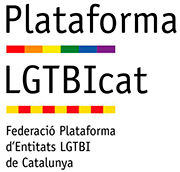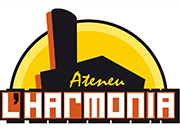By Herndon L. Davis
Originally printed 2/23/2006 (Issue 1408 - Between The Lines News)
During Black History Month, corporations and their advertising arms pledge their allegiance to cultural diversity in a continual effort to strategically target the estimated $852 billion (2007) African-American marketplace. However, there's also a thriving sub-segment of this community, scarcely been acknowledged and rarely marketed to as a lucrative niche: the black gay community.
All Gays Are Not The Same
Too often the estimated $610 billion U.S. gay/lesbian market is tracked without significant regard to race or ethnicity while assumptions are made that all gays have similar interests and needs. Who's to blame for such an oversight? The answer is complicated. Ironically, this situation lies parallel to what exists today within the mainstream community where there's a lack of ethnic diversity and outreach to communities of color. Further, when everyone sitting at the gay advertising decision table all look the same, what usually occurs is more of the same type of gay advertising and marketing directives.
"Strategic marketing to the gay community is still young," stresses Bob Witeck, CEO of Witeck-Combs Communications, Inc., an advertising firm specializing in the LGBT marketplace. "Segmenting a very hard to reach population will take some time and expertise to map given the tools available to market researchers."
Another reason for such a dearth of ethnic gay marketing is the fact that gay minority populations are not nearly as open about sexual orientation as their white counterparts, hence making it more difficult to track and market to them directly.
Earl D. Fowlkes, Jr., President/CEO of the International Federation of Black Prides, compares it to the "duality of race/ethnicity and sexual identity much like the duality of being black and American that W.E.B. DuBois wrote about 100 years ago in his book, 'The Soul of Black Folks.' Oftentimes we feel that we have to choose between being either black or LGBT just like many of us felt that we had to choose to be black or American. Only during the past few years have many black LGBT people realized that we can be both black and LGBT, and celebrate as well as acknowledge both which explains part of the growth of Black Pride over the past ten years."
Having to overcome racism and historical disadvantage is hard enough, but to also self-identify as gay/lesbian carries with it a double challenged existence, triple challenged if you count gay women of color.
The 2005 Hyperion Interactive Media guide, which tracks the gay/lesbian marketplace, confirms the difficulty of self-identifying as a gay person of color stating that "the mix of family pressure, machismo, and other cultural influences each have played their role in keeping these groups more tightly in the closet."
Hence, the face and voice of gay activism seen and heard most often on the evening news is almost exclusively that of gay white men who ironically still experience "white privilege" despite their challenged status as gay. Often to be gay and white still brings with it a level of access that gay ethnic minorities have never experienced.
Find a Way or Create One
Ironically, the lack of advertising/marketing attention towards the black gay/lesbian community and other gay communities of color has in several ways helped to bolster their own abilities to serve themselves.
Back during the days of racial segregation when Jim Crow laws kept black people out of many public establishments, black communities across the country were forced to ban together in order to create their own economic centers. In a parallel fashion, the same thing has occurred within the black gay/lesbian community who feel shut out by their white gay counterpart initiatives.
This has given birth and rise to numerous black gay themed books, magazines, movies and television shows that now proliferate the Internet other venues across the country. Publications such as Clikque Magazine, TV shows such as Noah's Arc, and movies such as "Brother to Brother" reflect a community of consumers of black gay themed products and services. The black gay community has managed to quietly thrive under the advertising radar of Madison Avenue.
"We are a huge community with great spending power," states Dwight Powell, editor of Clikque Magazine. "All year long I come in contact with tens of thousands of people at various events. These are people with great jobs, education and healthy relationships. These are people that own houses and purchase expensive cars. They are frequent travelers, extremely concerned about grooming and fashion, and are avid fans of music. This is an untapped market that must be included in marketing plans."
In fact, probably the most visible signs of a thriving black gay economic community is the over 30-city black gay pride circuit which occurs every year in large and mid-sized cities across the country and Canada.
According to Fowlkes, of the International Federation of Black Prides, in 2004 alone, "175,000 people attended 30 Black Pride events in the U.S. and Toronto. Atlanta and D.C. had the largest prides with 35,000 and 25,000 attendees respectively."
Despite the impressive numbers, getting advertisers/sponsors is still a challenge. Fowlkes explains, "I was usually shuttled between the LGBT marketing person, who was usually a white gay man, or the black community marketing person, who usually heterosexual, when I used to solicit sponsorship from companies for DC Black Pride."
One would think an event that brings 25,000+ people into a city would be an easy sell. "The LGBT person would tell me that they give money to the 'other' pride event despite the fact that most of the attendees of the Black Prides do not participate in the 'regular' pride events," says Fowlkes. "They would send me to the black community marketing person where I would have to explain the event over and over as well as deal with their homophobia. Sometimes they got it and sometimes they didn't."
The Future
As more gay/lesbian African-Americans come out the closet, the face and voice of the gay dollar will begin to transform. Therein lies the distinct possibility of black gays not only being consumers of gay-focused products and services but also becoming leaders of the direction of those products and services.
As we forge further into 2006, the possibilities of the potential power of the black gay dollar appears to just now be awakening and emerging into a new day of opportunity for a previously invisible and untrackable community.
Herndon L. Davis is an author, lecturer, and TV host of America's First Black Gay TV Talk Show. He can be reached directly at: http://herndondavis.com. This article originally appeared Jan. 27, 2006 on www.dissidentvoice.org.




